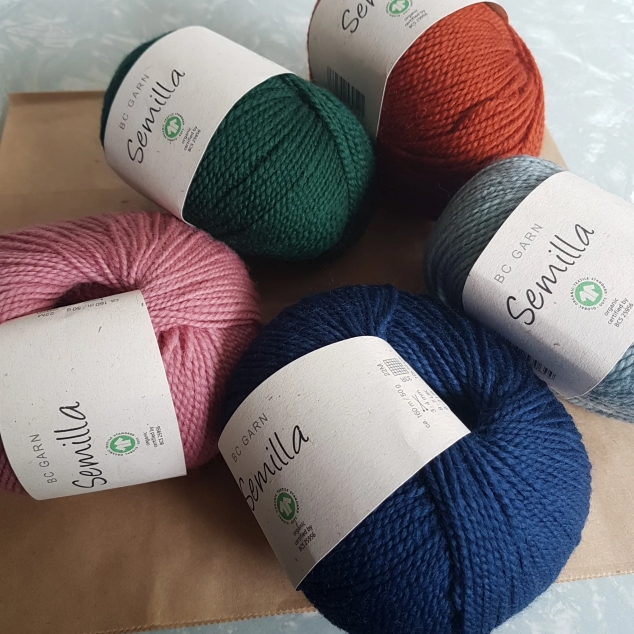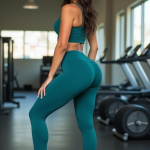Contents
The sheer number of crafts you can explore and the seemingly foreign vocabulary that accompanies them might easily overwhelm you when it comes to knitting, crocheting, or any other wool or thread craft. While it comes in a vast array of textures, colours, and fibres, the most crucial factor to consider when purchasing yarn for a new project or design is its weight.
The thickness of the yarn determines its weight, which in turn influences the recommended needle size and the number of stitches per inch. Selecting the appropriate weight is vital as it affects the drape, texture, and overall appearance of the finished item.
What Ply Is Best for Yarn?
The most popular weights are DK, worsted, bulky, sport, and lace yarn. Each weight has unique qualities and works best for specific types of projects. To make this guide more beginner-friendly, we’ll start with the varieties that are easiest to work with, regardless of skill level.
DK or 8-ply

The DK weight is the perfect choice if you’re after a yarn that falls squarely between light and bulky. As “double knitting” is what DK stands for, it’s a weight that suits various crafts, including blankets, beanies, scarves, and jumpers. This versatility makes it an excellent option for a wide range of knitting and crocheting tasks.
One of the many advantages of using the versatile 8-ply yarn is that it’s readily available in various fibres, such as wool, cotton, acrylic, and blends. This means, depending on your project’s needs—whether for warmth, softness, or durability—and your personal preferences, there is a suitable yarn for you within this range. It’s a weight that will easily become a staple in your yarn collection due to its versatility and the many fibres available.
To ensure that your finished product has the correct size and drape, it’s essential to pay attention to the gauge when working with DK-weight yarn and adjust your needle size as necessary. To keep track of your progress, you might also want to consider using a row counter or stitch markers.
The recommended needle size for DK yarn is 3.75mm or 4.5mm. Because it’s incredibly beginner-friendly, 8-ply yarn works well for almost any project you can imagine. Here are some suggestions:
- Vibrant poncho. There are numerous free poncho patterns available online to knit the perfect winter item.
- Winter wrist warmers. A handy design for a project to keep your hands warm during the cold months.
- Cosy cushion covers. A playful cushion pattern will add a splash of colour to your sofa. You could also knit the cutest baby cardigan.
Worsted/Aran or 10-ply
This medium-weight yarn is thinner than bulky varieties yet thicker than DK weight. Because it’s neither too thick nor too thin, it’s easy to work with and creates a lovely, even stitch, making it a great choice for beginning knitters and crocheters.
It’s ideal for knitting and crocheting various clothing items and accessories, such as shawls, jumpers, scarves, beanies, and more. It’s also a fantastic option for home décor projects, including cushions and blankets. The recommended needle size is 4.5mm or 5.5mm knitting needles.
Bulky or 12-ply
The bulky-weight variety could be perfect if you’re looking for an option that can quickly complete cosy creations. Compared to other weights, this type is thicker, heavier, and warmer, making it great for knitting or crocheting blankets and other home décor items, as well as winter accessories like hats and scarves.
Due to its thickness, fewer stitches are required to cover the same area, allowing you to complete the project in a shorter time frame. Additionally, this chunkier yarn type is excellent for loom weaving, which produces beautiful wall-hanging decorations. The recommended needle size for bulky weight yarn is 5.5mm or 8mm.
Sport/Baby or 5-ply

Sport-weight yarn is a common choice for many knitting and crocheting tasks. It’s ideal for lightweight jumpers, shawls, and baby clothing, among other uses.
Thinner than DK but slightly thicker than fingering weight yarn, the 5-ply produces a more delicate and intricate final product. It’s easy to work with and is an excellent option for projects requiring a finer gauge.
Choosing the right needle size is crucial when working with this variety to achieve the desired gauge. The fabric will be tighter with a smaller needle size and looser with a bigger needle size. The recommended knitting needle size for sport-weight yarn is 3.25mm or 3.75mm. This weight strikes a nice balance between light and medium-weight yarn, making it ideal for year-round wear as well as baby clothes.
Lace or 2-ply
Twisted together, two plies of extremely fine yarn comprise the lace-weight variety, the lightest weight available. Due to its delicate and thin nature, it’s perfect for crafting intricate items like shawls and other lacy creations as well as for producing airy fabric.
Using tiny needles or hooks is essential to help you achieve a tight and even stitch when working with lace-weight yarn, which will reduce the chances of snagging or splitting. Additionally, it’s crucial to exercise patience and proceed slowly; working with 2-ply can be challenging, but with time and skill, you can create stunning pieces that are sure to impress.
The recommended needle size for this weight is 2.25mm or 3.25mm knitting needles. The 2-ply yarn is perfect for crafting light, flowing garments such as wraps and shawls. It’s also ideal for intricate crochet projects like doilies and lace-style embellishments.





Comments are closed.